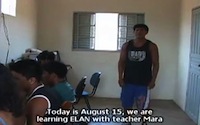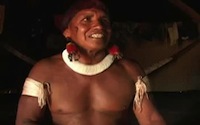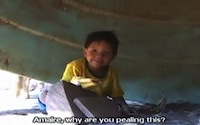The Upper Xingú constitutes an intertribal and multilingual system, as a result of a long process of adaptation of different migration waves. We find, in the Upper Xingú today, indigenous peoples belonging to the main stock and the two major language families of the South American Lowlands: Tupi, Carib and Arawak, totalizing a population of 2,500. There is a dynamic balance between faction conflicts and political interaction in the region, which presents a complex trade network, where each group maintains its own territorial, political and linguistic identity, as well as some specific cultural elements. The Upper Xingú Carib groups are the Kuikúro, the Matipú, the Nahukwá and the Kalapálo. Their traditional territory lies in the eastern region of the upper Xingú, drained by the rivers Culuene, Buriti and Culiseu. The Kuikúro are around 500 individuals living in three villages: Ipatse (main village), Ahukugi and Lahatuá. Around 50 Kuikúro speakers live in the Yawalapiti (Arawak) village, near the mouth of the Tuatuari river.

The Kuikuro village of Ipatse (Photo by Pedro Martinelli/ISA, 1999)
Kuikúro villages, like all Upper Xingú villages, are characterized by a central plaza surrounded by a circle of houses.
});]]>
The central plaza is the place for the performance of intra and intertribal rituals, and receives at its center a house where ceremonial flutes and masks are stored.

The ritual of Hagaka or Javarí (Carlos Fausto, 2004)
Kuikúro houses are big ‘malocas’ whose design reveals an extremely complex architectural knowledge. A house is inhabited by one or more extended families.
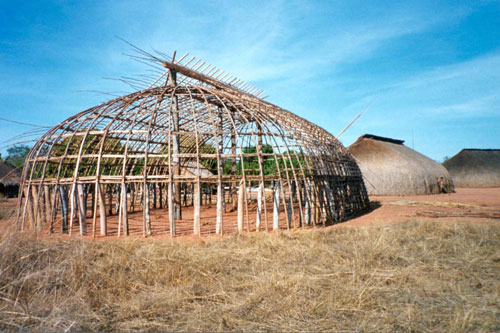
A traditional house (Bruna Franchetto, 2001)
Kinship terminology is Dravidian-like, distinguishing parallel and cross-cousins, a distinction which can nonetheless be neutralized in some contexts. Cross-cousin marriage is the most common form of marriage, and post-marital residence is uxorilocal (the bridegroom lives with their in-laws after marriage). There are no unilineal groups and kinship is cognatic.
Manioc agriculture and fishing are the main productive activities for subsistence, but other cultivars are also important both for food and ritually. Extensive pequi orchards surround all Upper Xingú villages. The Xinguanos are fine and creative craftspeople; their material culture is impressive for its richness and sophistication.
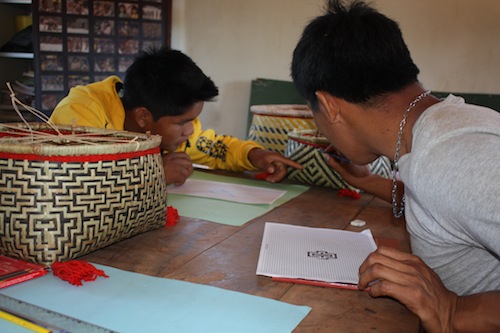
Basketry: workshop for inter-generational transmission of skills and knowledge (Mara Santos, 2010)
Shamanism is strong and alive among the Kuikúro, articulating the cosmopolitics of the spirits with the sociopolitics of the chiefs. Upper Xingú society is strongly hierarchical. Chiefly status is inherited from both maternal and paternal lines, but access to main chiefly functions depend on individual capacities and performances during life. The principle chief is the one who receives notables from other communities by performing the chiefly speech, a formulaic and formal discourse.
Upper Xingú people are verbal artists displaying a myriad of verbal genres: ceremonial discourses, formal oratory, preyers, songs, besides different narratives styles. They exceed in storytelling, reflecting their view of the world as a matter for prose and poesy. As the Kuikúro say, “everything has a story”.

